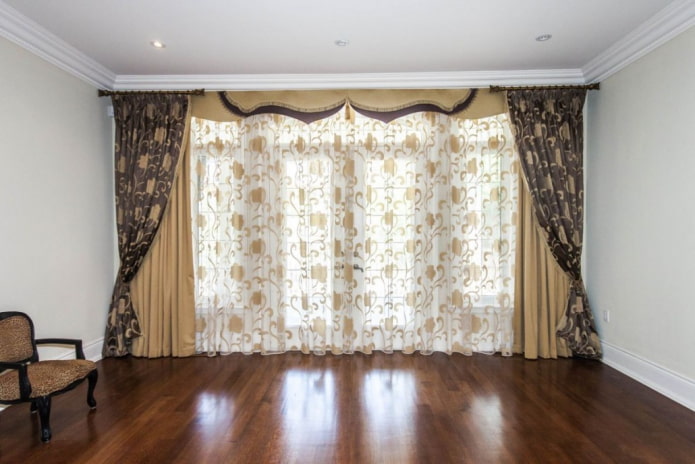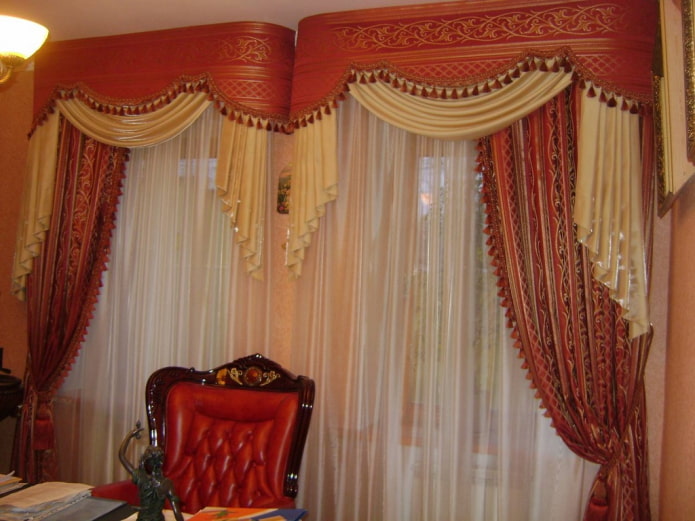Types of Lambrequins
Lambrequins for the hall can be made of various materials. The use of one or another type can be dictated by specific requirements or have only a decorative function.
Rigid (bando)
This type hides the cornice and the fastening system. The fabric is pulled over a rigid base or attached to a non-woven base, which is called a bando. In the hall, such an element can be made in the form of a semicircle, rectangle, have a carved or smooth edge.
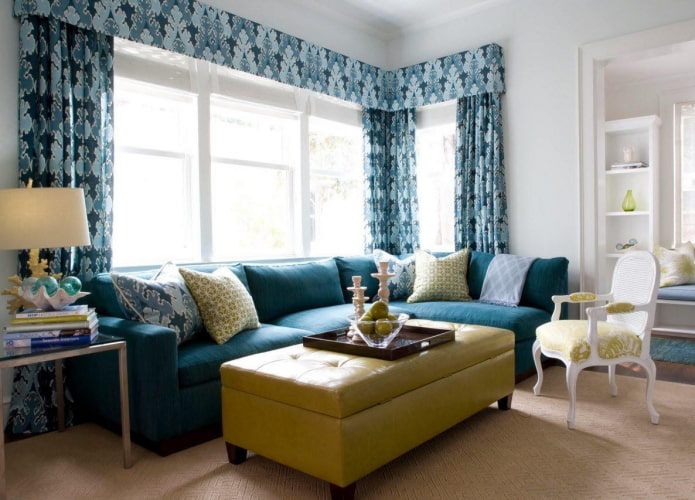
The photo shows a classic living room with a lambrequin and blue textiles.
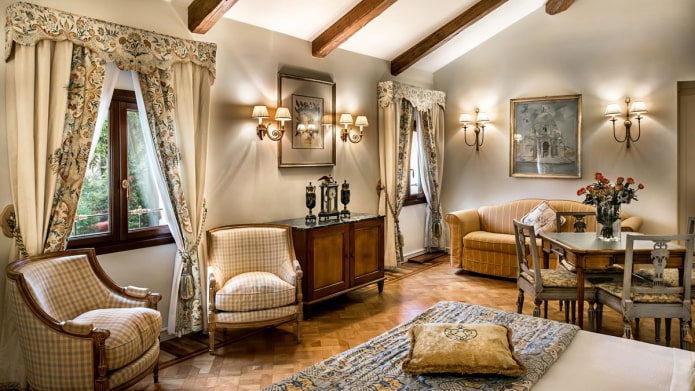
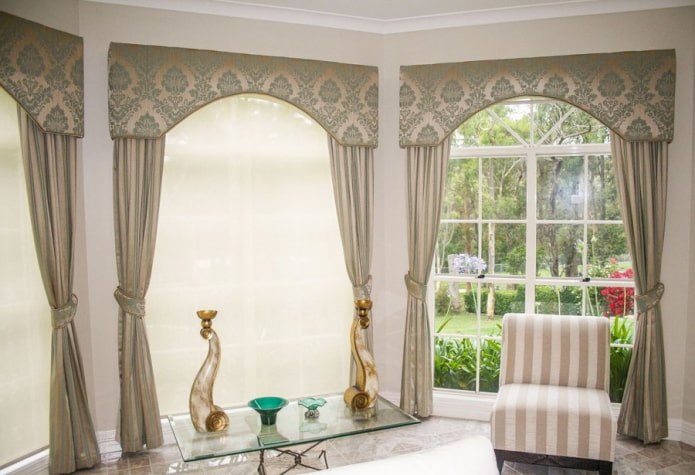
Soft
This type of decor is made from fabrics that are easy to drape. The folds can be vertical with a straight or arched edge. In the living room, a throw over the cornice looks great, when horizontal folds softly frame the window.
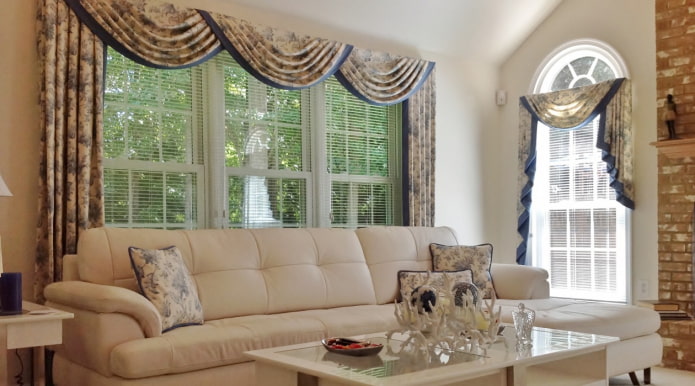
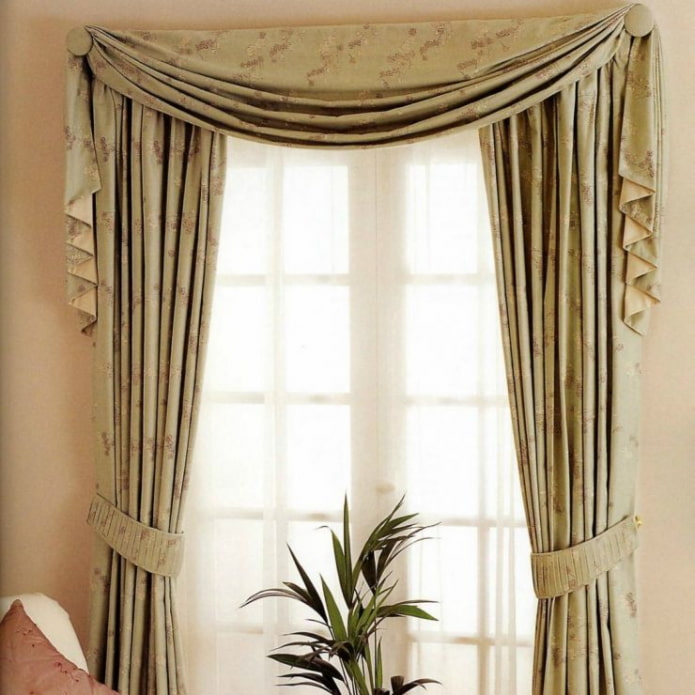
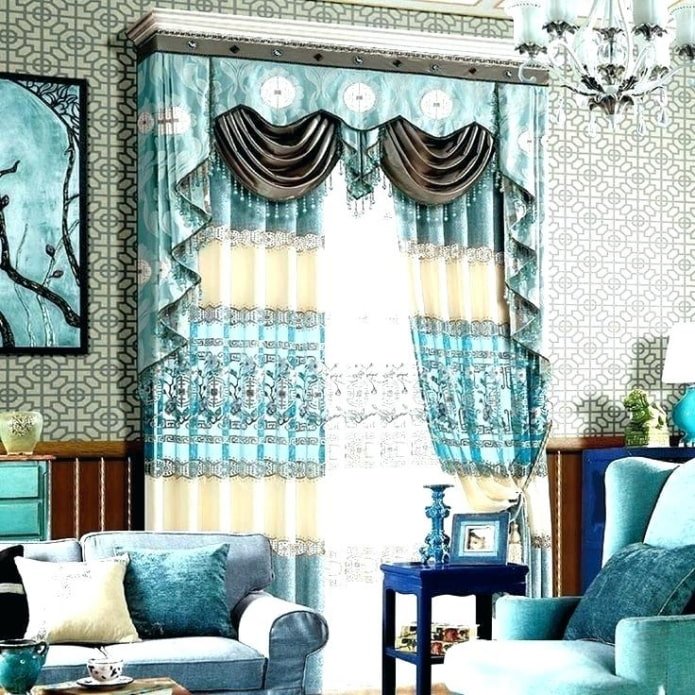
Combined
This type combines a rigid part and soft draperies. It looks great on large windows and high ceilings in a spacious living room.
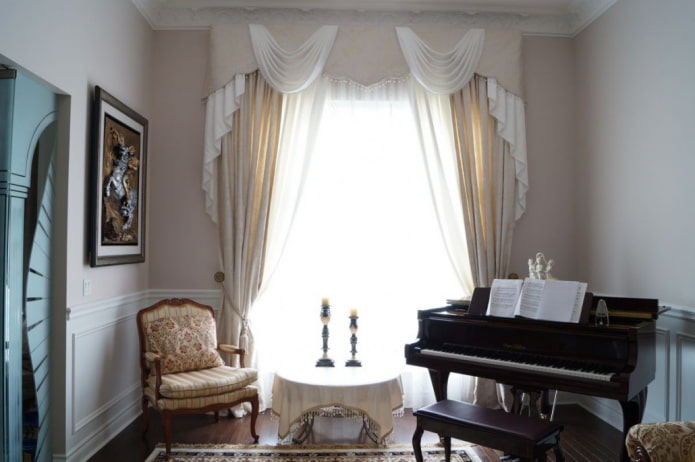
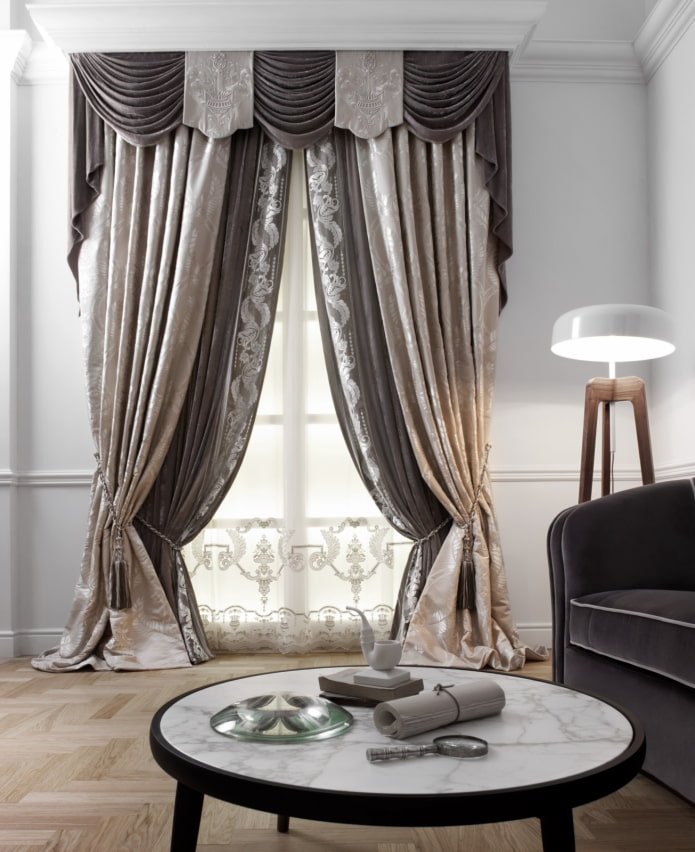

Forms drapery of soft lambrequins
One of the main features of the design of the lambrequin for the hall is the variety of drapery options.
Coquille
This type of drapery is used in the middle of the window opening. Its vertical folds form an acute angle.
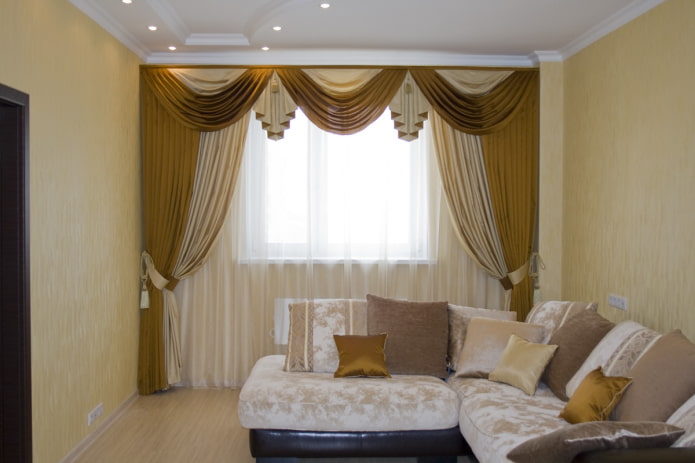
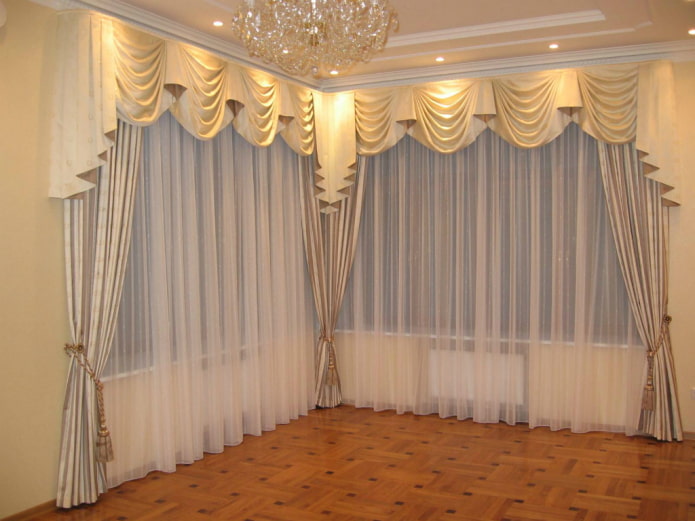

Swagi
Sagging fabric that forms soft, semicircular folds. Swags can be symmetrical or one-sided, contrasting or plain.
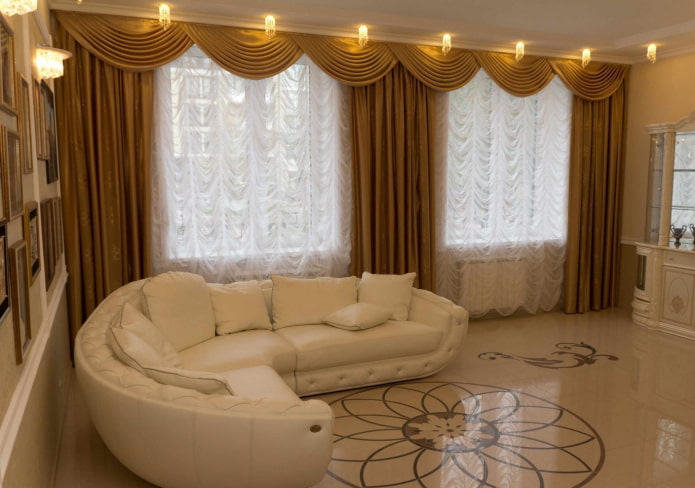
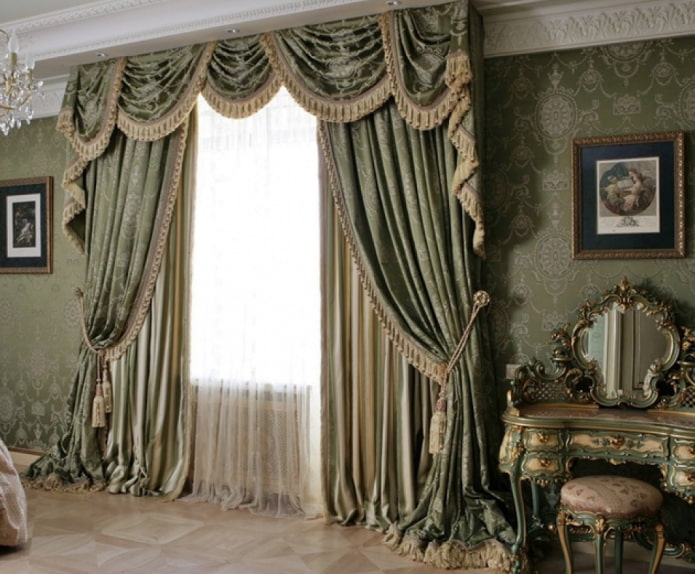
Jabot (de jabot)
Fabric drapery on the sides of the window opening in the hall. It has a beveled edge and is shaped like a jabot.
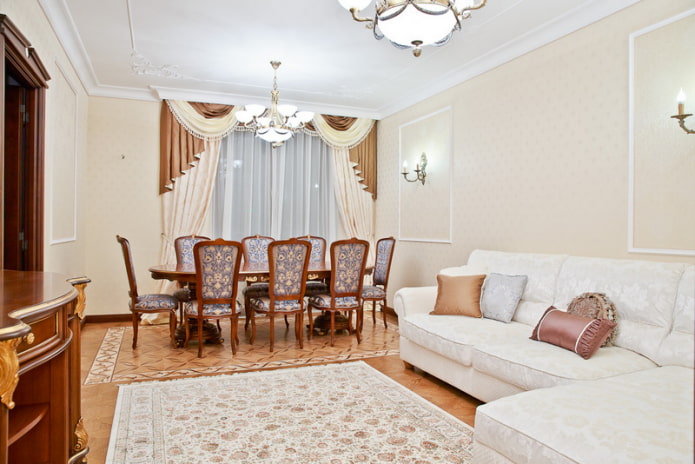

Throw-over (half-swag)
Fabric thrown over the cornice, with a freely hanging edge. This type of drapery is often used in combination with a rigid lambrequin for the hall.
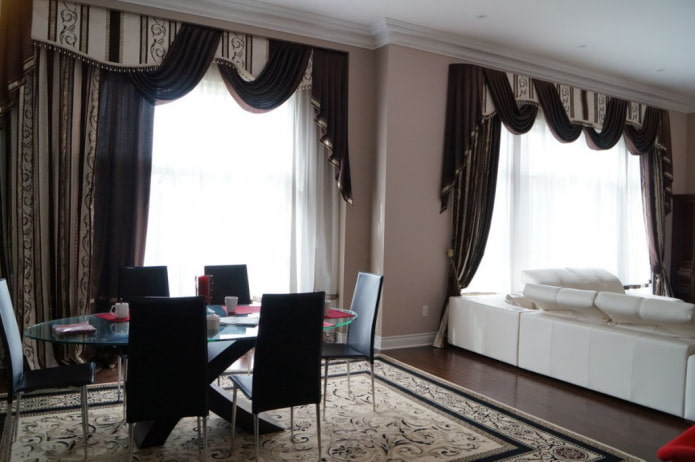
In the photo, the fabric is thrown over a rigid lambrequin
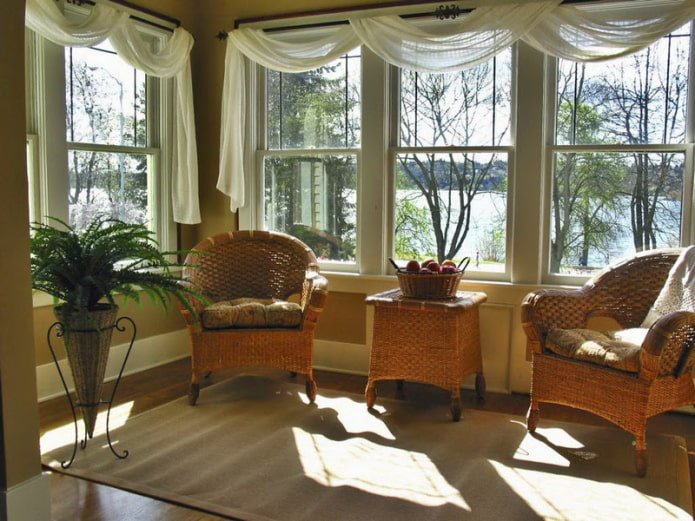
Tie
This is a side element. It is usually narrower than the jabot. It also has vertical folds. In combination with swags, it makes a classic lambrequin for the hall.
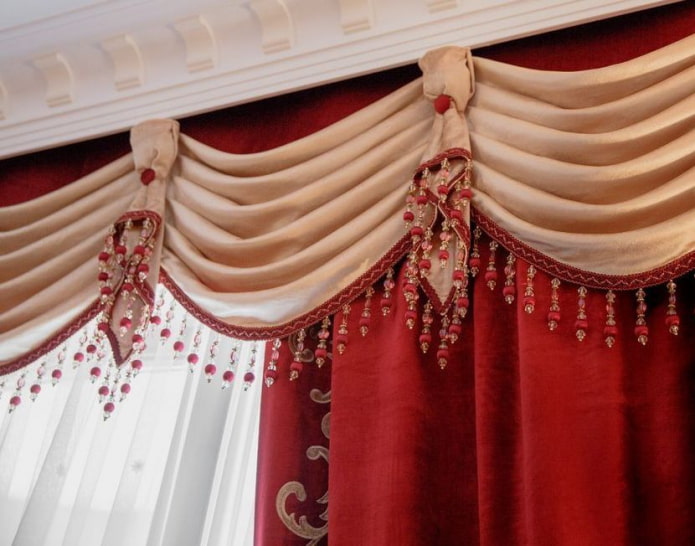
In the photo, the “tie” element is decorated with beads
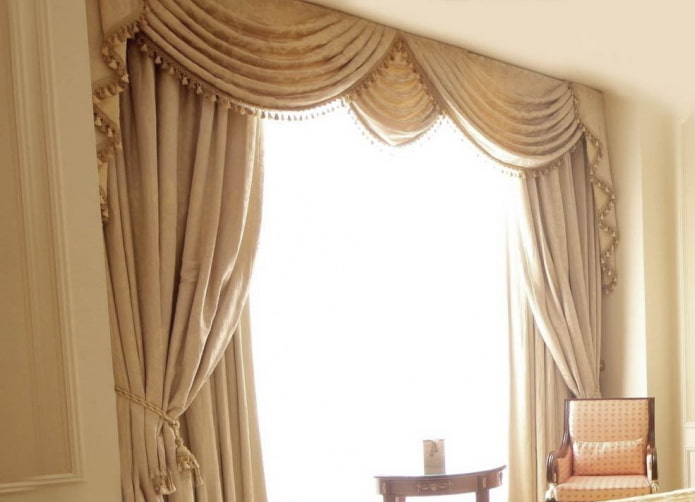
Cascade
Cascade is a trapezoidal piece of fabric that falls in wide folds. It is used along the perimeter of the window, emphasizing its borders. Cascades can have a lining of contrasting fabric, which is demonstrated by turning back.

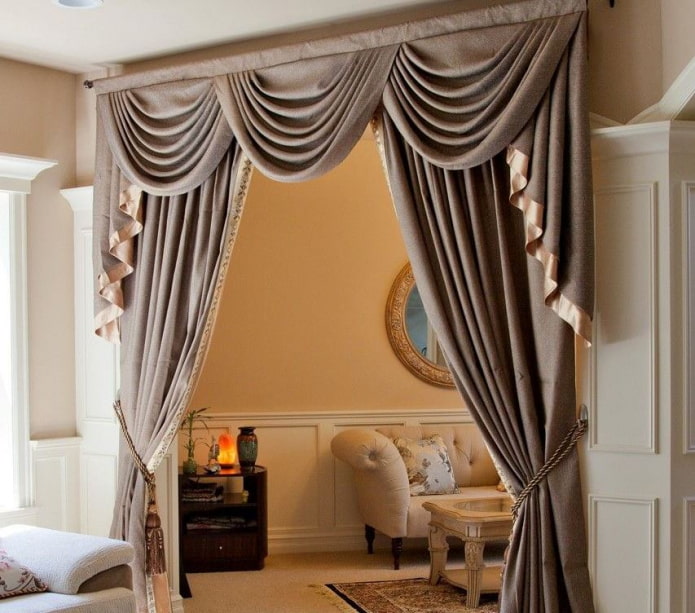
In the photo, cascades with a satin lining are effectively combined with decorative grabs
Lambrequin material
Traditionally a decorative element for the hall sewn from the same fabric as the curtains. If the fabrics are different in density and texture, they should go well with each other. Light, weightless materials are suitable for small living rooms. A lambrequin for a hall, sewn from heavy fabrics, will give the room solidity and nobility.
Veil
Veil, translated from French, means a cover or curtain, which determines its purpose. Decor for a hall made of organza falls in beautiful, soft folds. Exceptional draping ability allows you to create fashionable lambrequins for a hall. An unusual design is typical for the “carnival” model, when a bright and deep color turns into a soft white.
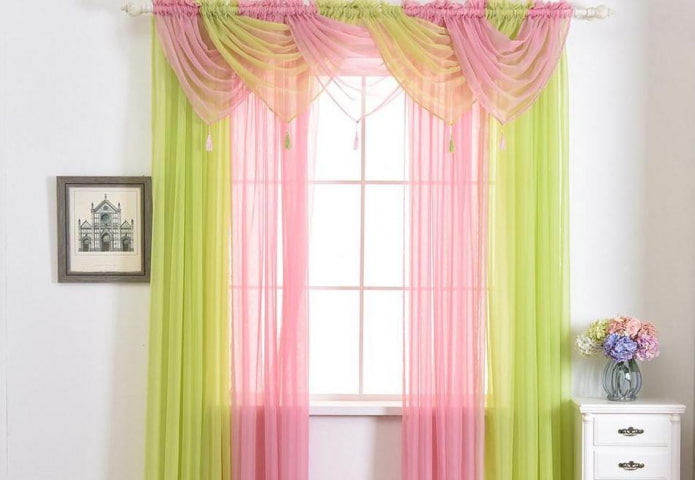
Organza
If you need to preserve sunlight in the living room, then the best option is organza fabric. Thin and light material will ennoble the hall, breathe lightness and aristocracy into the space.
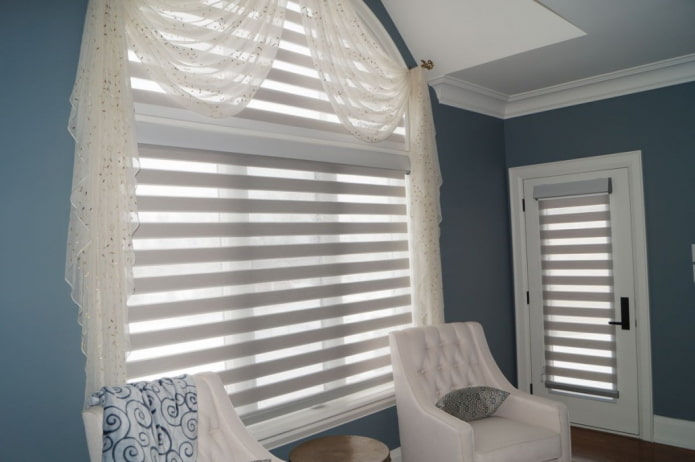
Felt
Lace decor for the hall made of felt, which is attached to a special tape, is becoming increasingly popular. They try to combine it with other elements of the hall by color or ornament.
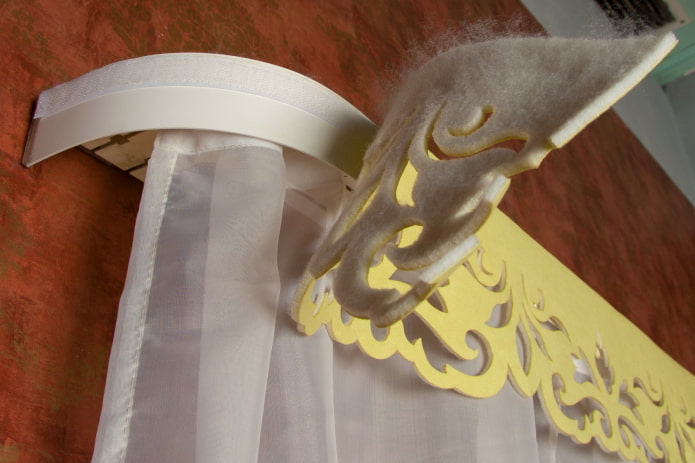
The photo shows a method of attaching a carved felt lambrequin to a cornice with a special tape.
Chiffon
Chiffon curtains are very light and transparent. When the window in the hall is open, such curtains will flow, giving in to the breeze. The undoubted advantage of chiffon lambrequins is the ability to use bright colors. Window decoration for the hall, made of chiffon, draws attention to the living room window with the help of color and cascading folds.

In the photo, a delicate chiffon lambrequin is formed by throwing over a single-piece piece of fabric.
Satin
Satin is a fairly dense material. A lambrequin for the hall made of such fabric looks impressive in a large living room. Satin also has a bright shine. This should be taken into account when decorating a window. To eliminate the effect of “cheap” shine, a satin lambrequin for the hall is combined with a veil.

Design and patterns
When choosing the design of the lambrequin, take into account the overall style of the living room. The pattern should be combined with the pattern on the textiles, such as sofa cushions or curtain tiebacks.
Openwork
Openwork decor for the hall window can be hard, made using laser cutting, or soft, made of thick felt. The smaller the window in the hall, the simpler the ornament should be. For a high window in a spacious living room, you can choose a wide openwork decorative element. Small contrasting lambrequins for the hall with a laconic pattern are very fashionable now. They will suit any window and will decorate a living room in a modern or classic style.
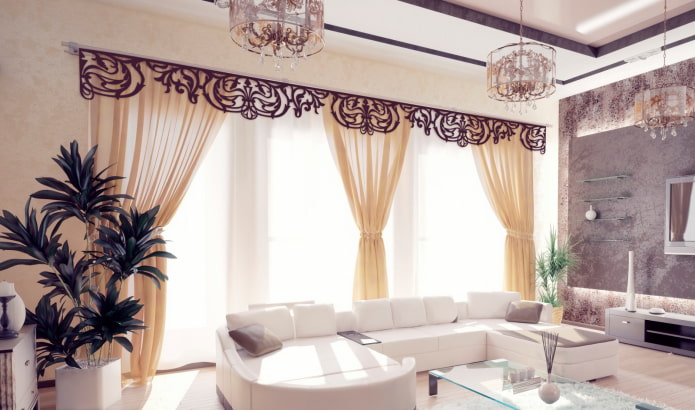
In the photo, a light openwork lambrequin is contrastingly emphasized by beige curtains.
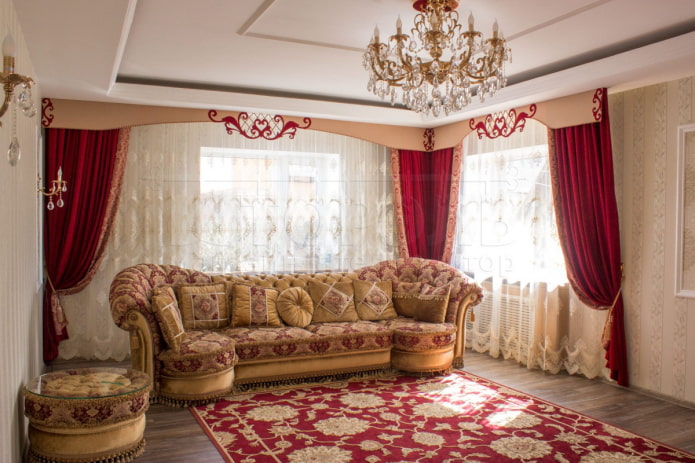
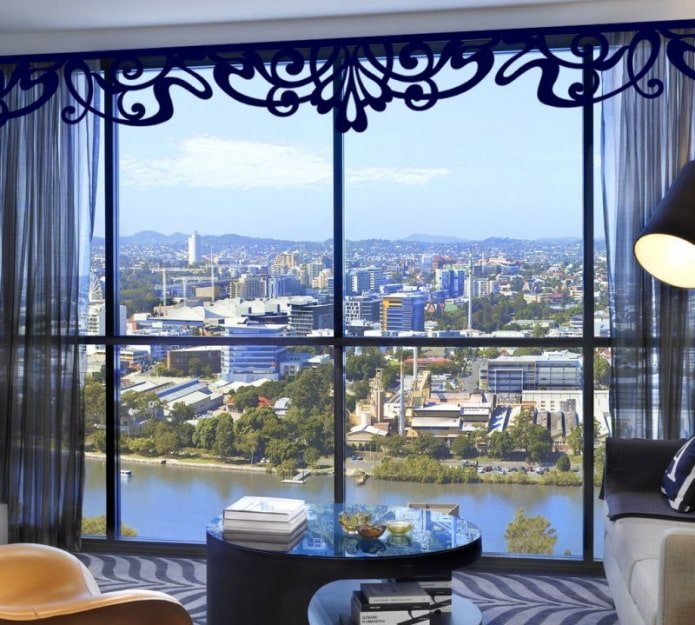
Asymmetrical
Asymmetrical design involves draping the living room window on one side. This approach may be dictated by the arrangement of furniture in the hall, when it is impossible to open the window space on both sides. It is relevant to place draperies on one side when decorating a balcony door in the living room.
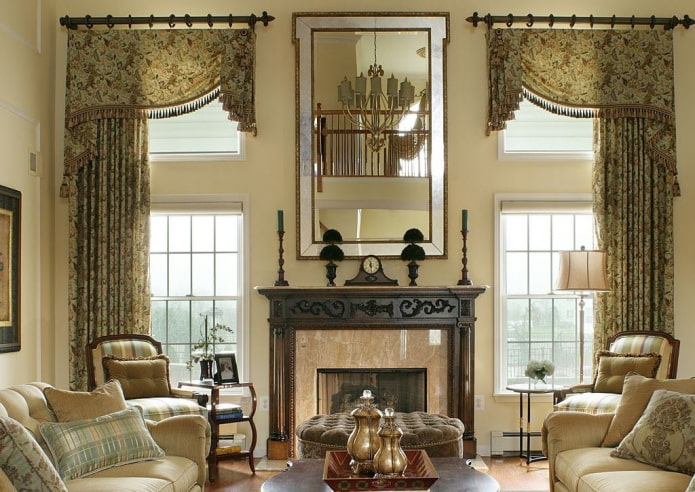
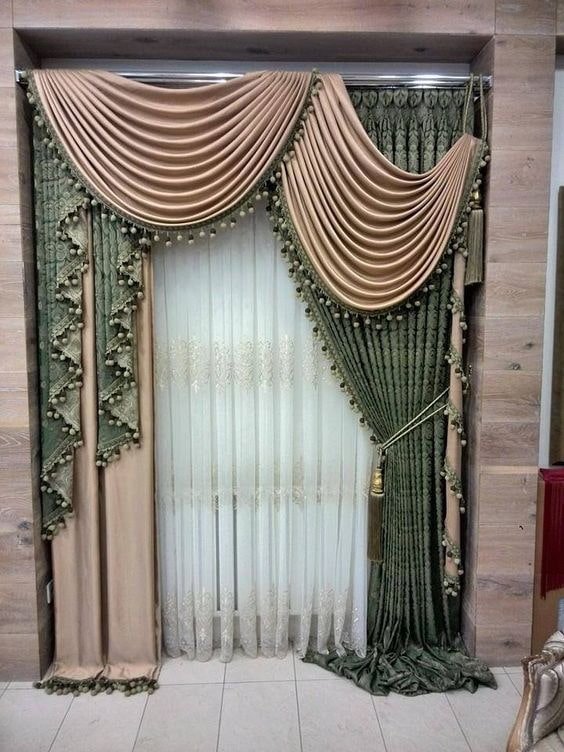
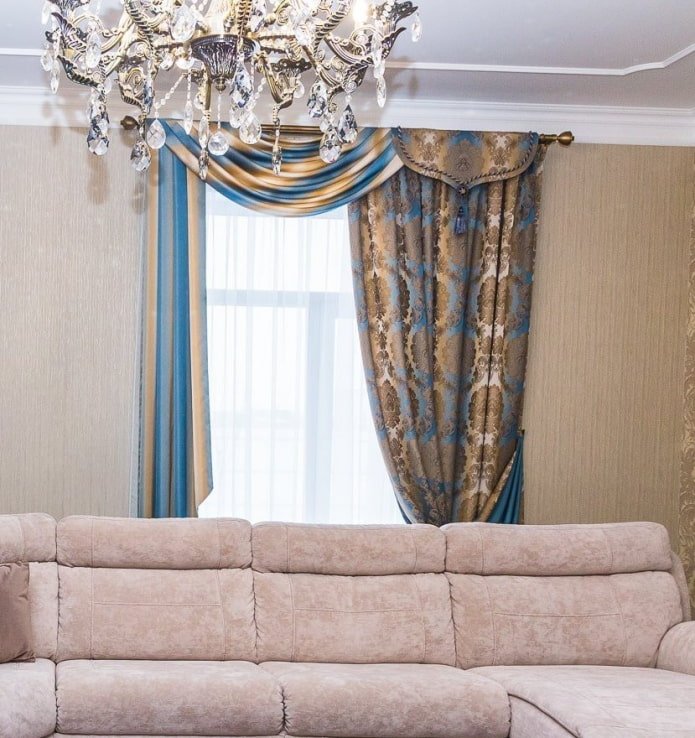
Puffs
Puffs are often used in small halls or spacious living rooms. They are located horizontally and have a smooth edge. The folds can be gathered in various options: braid, crinkle or balloon.


The photo shows the braided version of the puff.
With fringe
Modern fringe decoration is distinguished by the use of additional decorative elements – beads, glass beads, seed beads or even shells.
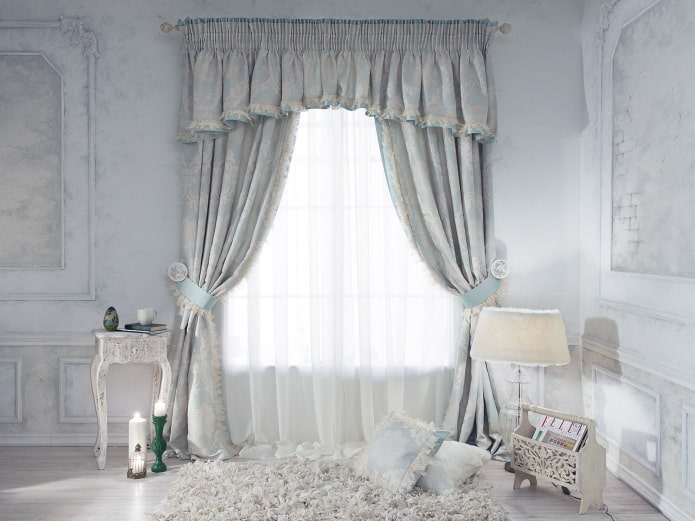
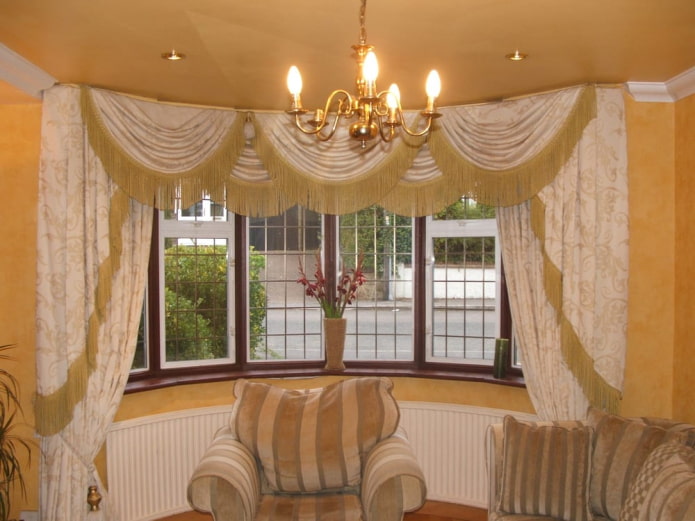
With tassels
Lambrequins for the hall are often decorated with tassels. They give the room a formal look.
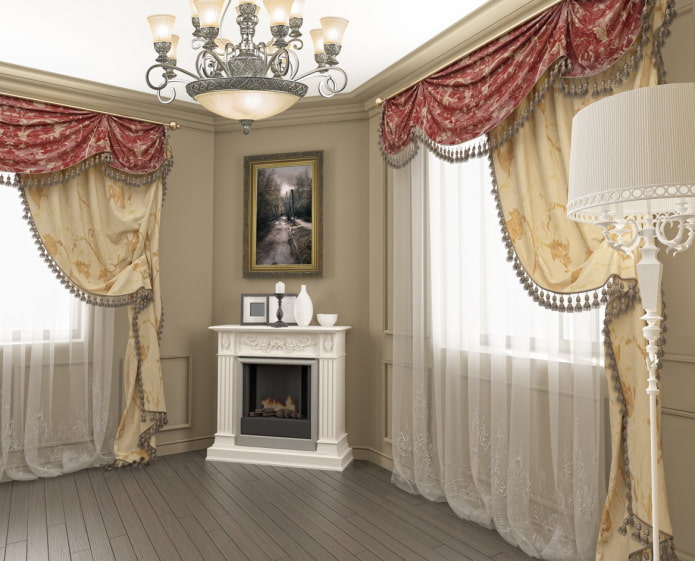
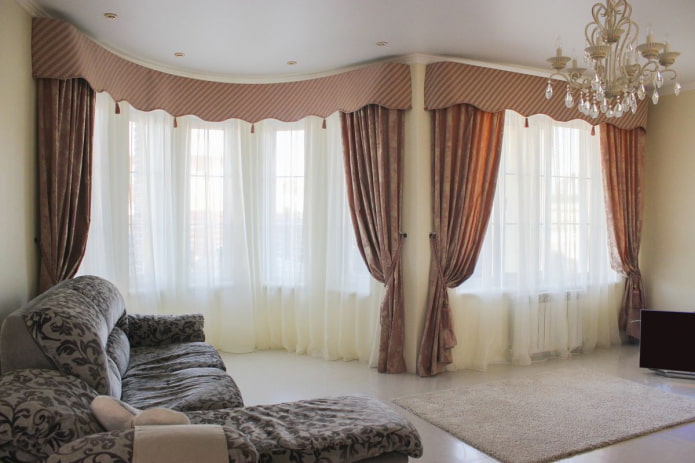
In the photo, a simple white Bondo lambrequin is decorated with large tassels
Simple
Simple lambrequins for the hall do not overload the living room, have clear lines and are suitable for small rooms. A short, narrow decorative element will visually raise the ceiling and let in sunlight.
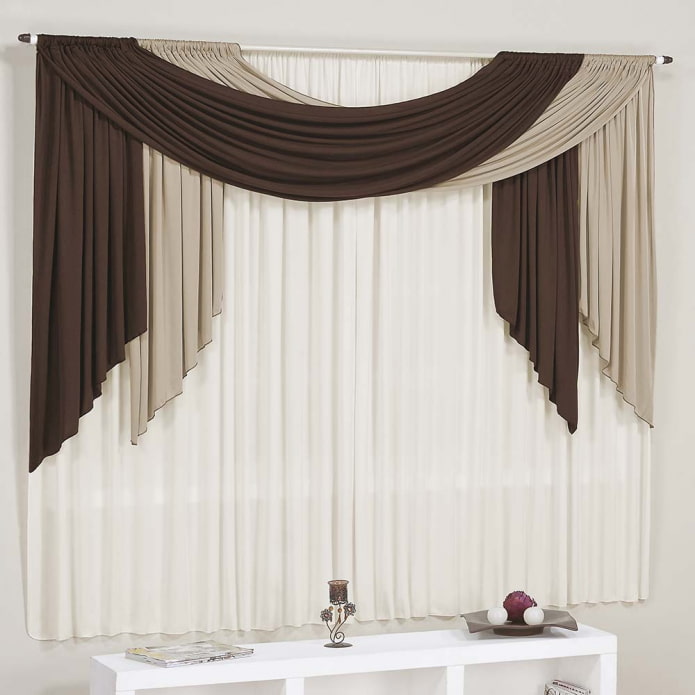
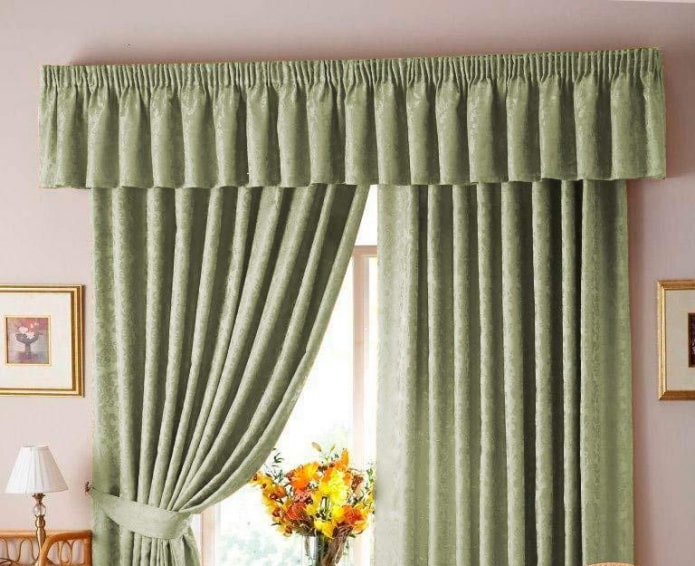
Tetrahedral shape
A tetrahedral lambrequin is a strip of fabric with a lining made of the same or contrasting material. By changing the mounting method and width, you can create a unique look for your living room. It can have a rigid base and a contrasting pattern. A lambrequin for a hall with a bright pattern, which is used with simple curtains, looks advantageous.
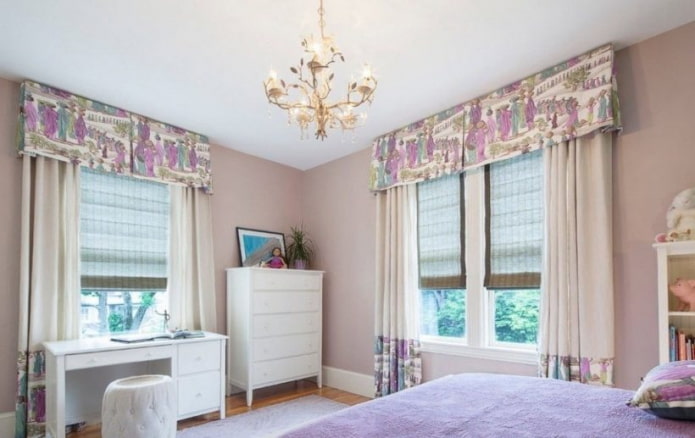
With flowers
When choosing a lambrequin for a hall with flowers, the features of the room are taken into account. Dark colors can be added to light tones such as white, blue, pink, beige. The proportions must be respected. Large bright flowers will look inappropriate in a small living room. Decor for the hall with voluminous flowers is a fashionable trend of this season.
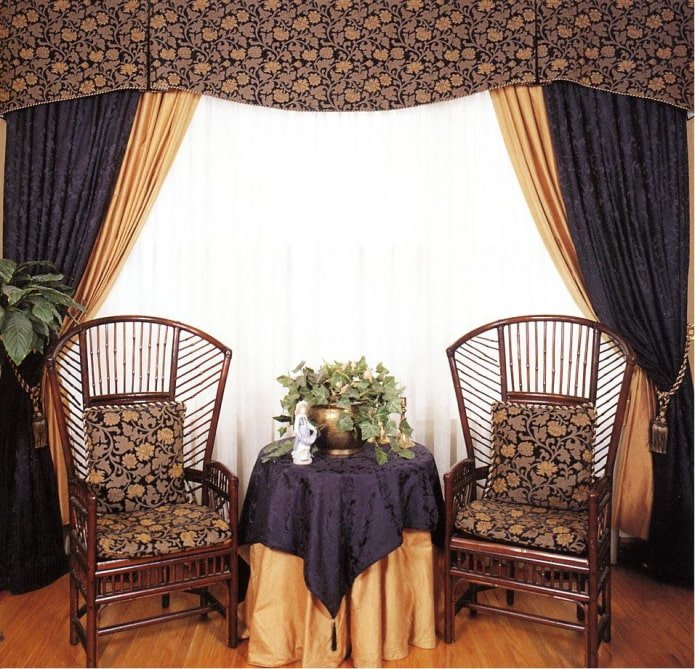
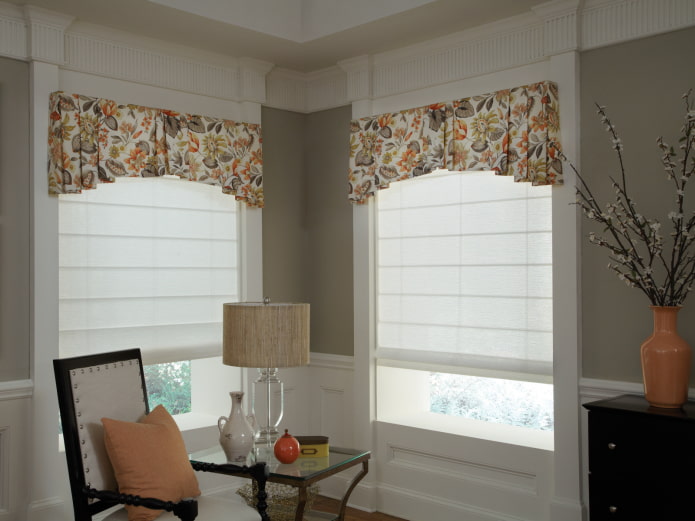
Two-color
Such lambrequins for the hall are usually built on a contrasting combination of colors. These can be light and dark alternating semicircular swags. Not only colors can be contrasting, but also materials, when a hard dark lambrequin is combined with delicate, light fabric of curtains or living room textiles.
